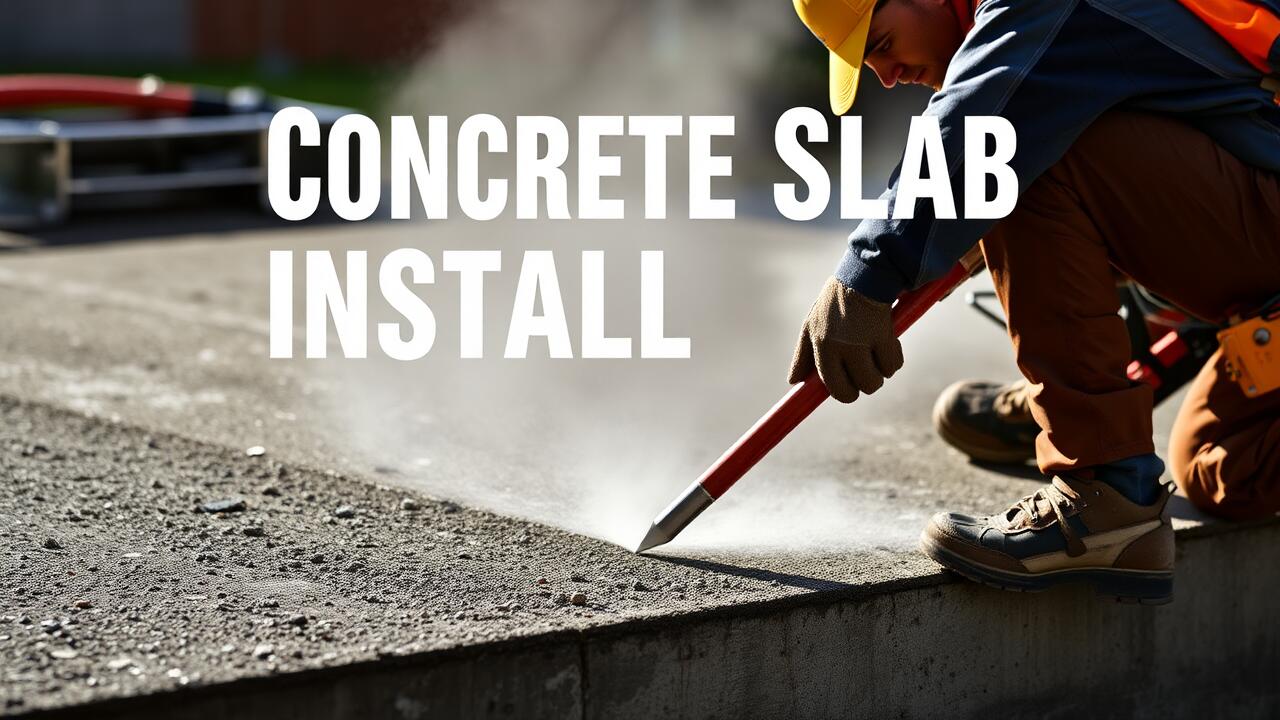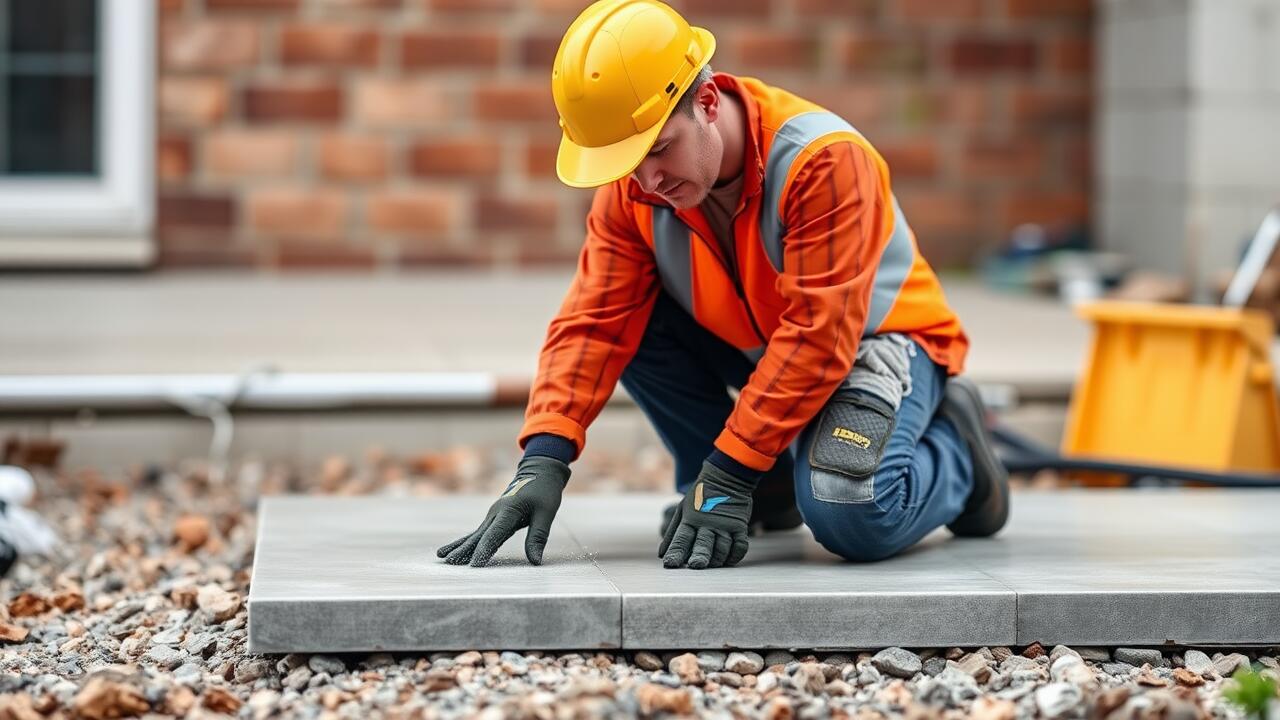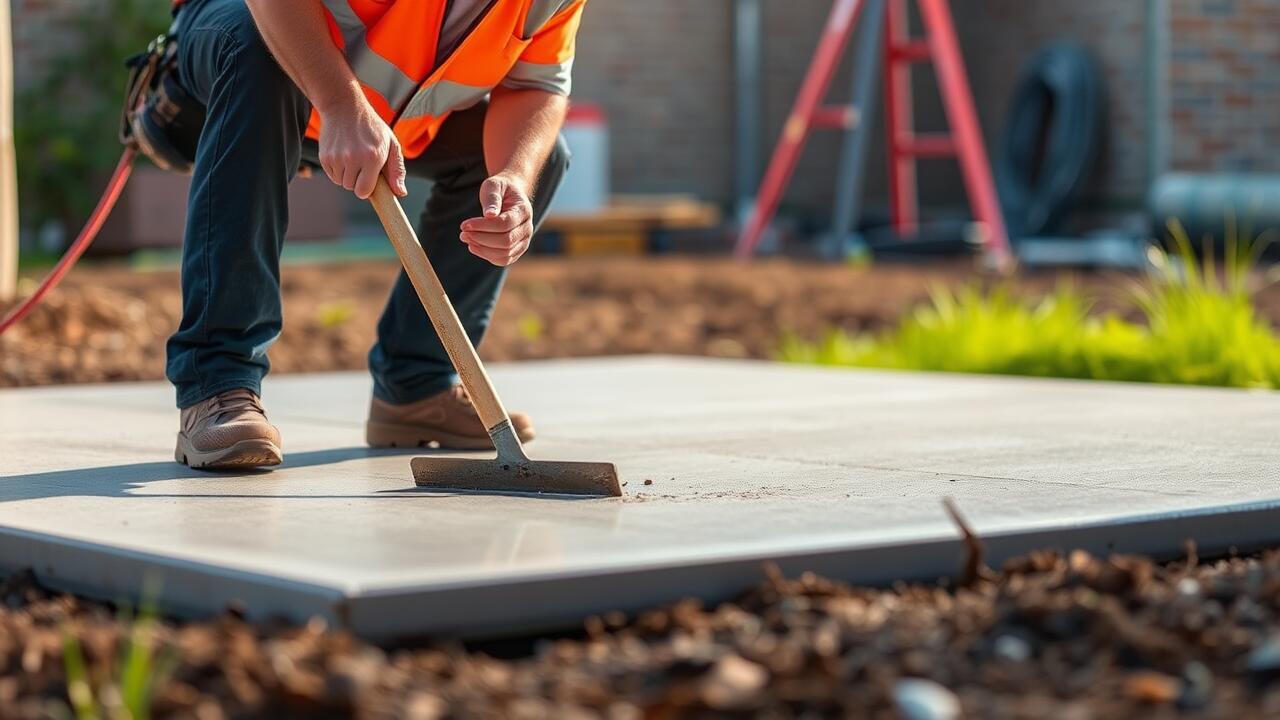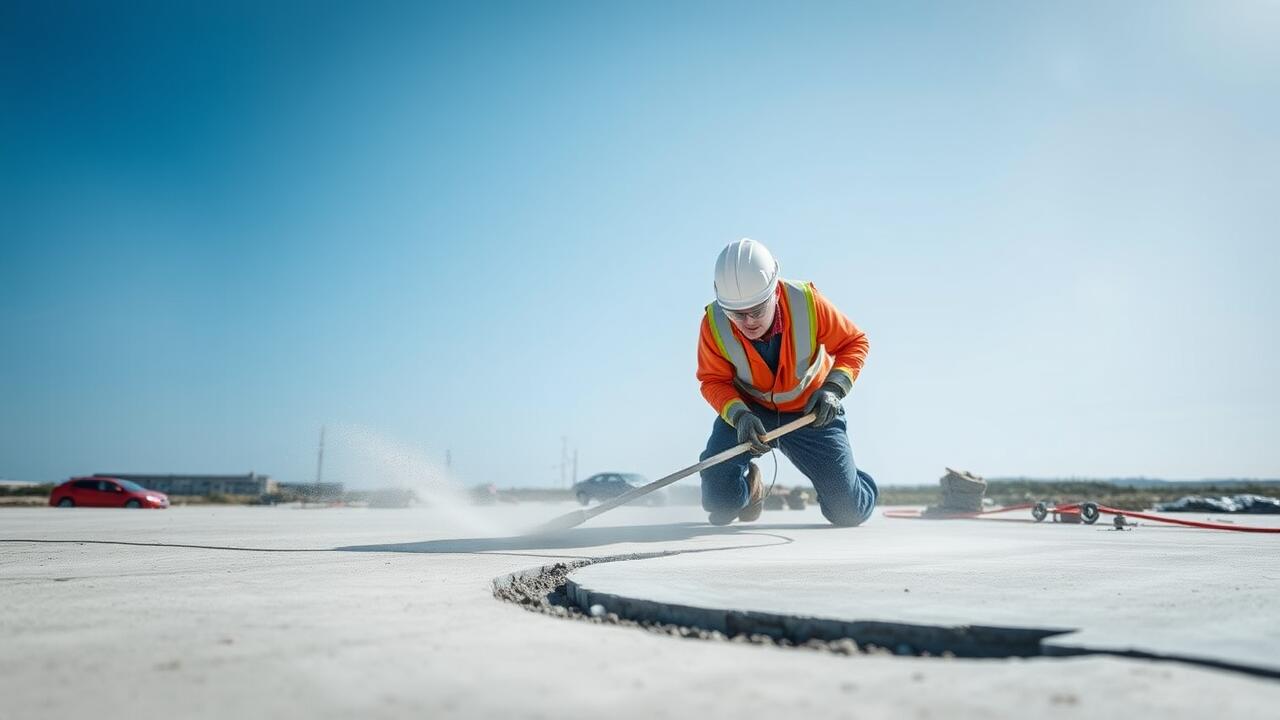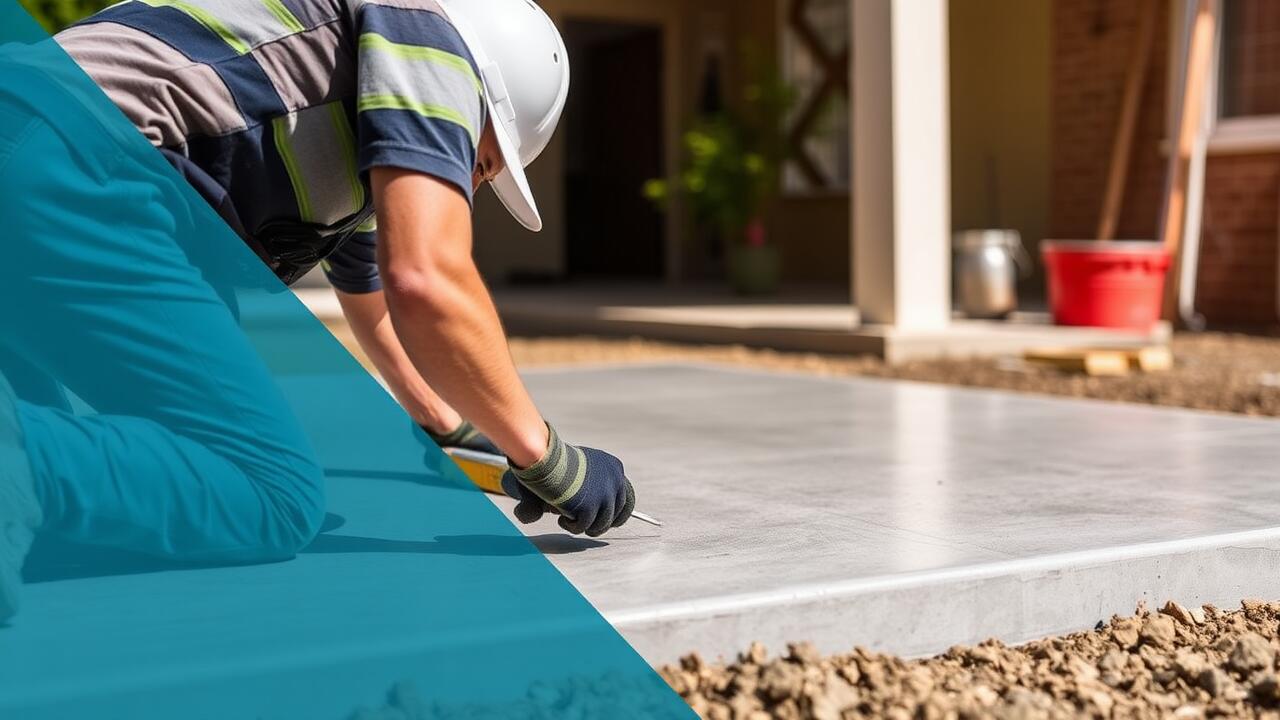
Impact of Frost Lines
Frost lines play a crucial role in determining the appropriate depth for concrete slabs, particularly in regions where temperatures can drop significantly. These lines indicate how deep the ground freezes during winter months, impacting the stability of any structures built on the surface. If a concrete slab is not installed below the frost line, the potentially shifting soil can lead to structural damage over time. This is especially relevant for homeowners considering Concrete Slab Installation in North Gateway, Phoenix, an area with unique climatic conditions that must be carefully evaluated.
Understanding the specific frost depth for a location is essential for ensuring long-lasting structural integrity. In areas with milder climates, such as parts of Phoenix, the frost line may be less of a concern, allowing for shallower installations. However, even in these regions, fluctuations in temperature should not be overlooked. Homeowners should consult local building codes and engage with experienced contractors to navigate these complexities effectively when planning their concrete slab installation.
Frost Depth Considerations in Different Regions
Frost depth varies significantly across different geographical areas, largely influenced by climate conditions. Regions with colder winters, such as the northern United States, require deeper slabs to prevent frost heave. Designers and builders consider historical weather patterns and state regulations to establish appropriate depths. In contrast, warmer climates, such as those found in southern states, typically allow for shallower slabs due to minimal frost risk.
When undertaking Concrete Slab Installation in North Gateway, Phoenix, builders must evaluate local frost depth requirements. The area experiences milder winters, resulting in less concern over frost heave. This difference in climate allows for more flexible construction techniques and potentially reduced costs. However, engaging with local building codes and standards remains essential to ensure structural integrity throughout the year.
Reinforcement Techniques
Reinforcement techniques are essential for enhancing the structural integrity of concrete slabs. Incorporating materials such as rebar or welded wire mesh during the concrete pouring process can significantly improve resistance to shifting and cracking. These reinforcements help distribute loads more evenly, especially in high-traffic areas or locations with unstable soil conditions. Homeowners considering a construction project should be aware that the choice of reinforcement can impact both the longevity and performance of the slab.
For those involved in the concrete slab installation in North Gateway, Phoenix, exploring various reinforcement options may also be prudent. Local climate conditions and soil characteristics can dictate the necessity and type of reinforcement required. Engaging with a qualified contractor can provide insights into the most effective techniques tailored to specific site conditions. Proper reinforcement not only ensures durability but may also enhance property value over time.
Enhancing Slab Strength with Reinforcements
Incorporating reinforcement techniques into a concrete slab can significantly enhance its strength and durability. Steel rebar and wire mesh are commonly used to improve structural integrity. These materials help distribute loads evenly across the slab, reducing the risk of cracking and structural failure over time. Adequate placement of reinforcements during the initial pouring of the slab is crucial for maximizing effectiveness. Attention to detail during this process ensures that weaknesses are addressed before they can manifest.
For those considering concrete slab installation in North Gateway, Phoenix, selecting the right reinforcement strategy is vital. The region’s specific environmental factors must be taken into account when designing the slab. Factors such as soil conditions and potential exposure to moisture can influence the appropriate reinforcement method. Ultimately, a well-reinforced slab not only supports the weight of the structure but also helps maintain its longevity against local weather and ground conditions.
Cost Implications
The cost of a concrete slab varies significantly based on its depth and the local market conditions. Shallow slabs may require less material, reducing upfront costs, but they could lead to future expenses if structural issues arise. Deeper slabs, although more expensive initially, often provide greater durability and stability, especially in areas with expansive soils or significant frost heave. Homeowners should weigh the initial investment against potential long-term savings related to repairs and maintenance.
In regions like North Gateway, Phoenix, the choice of slab depth can influence overall project budgeting. The pricing also varies depending on labor costs, site preparation needs, and material quality. Home builders often find that tailored solutions for Concrete Slab Installation in North Gateway, Phoenix, lead to better outcomes and provide optimal value. Allocating funds for the right depth not only addresses immediate needs but also enhances the property's overall longevity and safety.
Budgeting for Different Slab Depths
When planning for a concrete slab installation, it's essential to factor in the depth of the slab, as this decision can significantly impact overall costs. Thicker slabs often require more materials and labor, which can drive up expenses. Additionally, local building codes may dictate minimum depth requirements based on soil conditions and climate, further influencing the budget. It is crucial to understand these requirements, especially for areas like North Gateway, Phoenix, where temperature fluctuations may require deeper installations to address frost line concerns.
Budgeting also involves considering additional components associated with deeper slabs. Increased concrete volume necessitates a higher material cost, which should be accounted for in initial estimates. Moreover, if the project demands unique reinforcement techniques to enhance stability, those expenses will add up as well. For homeowners in North Gateway, Phoenix, evaluating all these factors before finalizing a budget can help ensure a smooth concrete slab installation process while avoiding unexpected financial burdens.
FAQS
How deep should a concrete slab be for a house?
The recommended depth for a concrete slab typically ranges from 4 to 6 inches, depending on the specific requirements of the project, including load-bearing needs and local building codes.
What factors influence the depth of a concrete slab?
Factors such as frost line depth, soil type, intended use of the structure, and reinforcement techniques all play a critical role in determining the appropriate slab depth.
How do frost lines affect slab depth?
Frost lines indicate the depth to which the ground freezes in winter. In regions with significant frost, slabs must be placed below the frost line to prevent cracking and shifting due to freeze-thaw cycles.
What are some reinforcement techniques for concrete slabs?
Common reinforcement techniques include using steel rebar, wire mesh, or fiber reinforcement to enhance the slab's strength and durability, particularly in areas with heavy loads or unstable soil conditions.
How can the depth of a concrete slab impact project costs?
Deeper slabs generally require more concrete and additional reinforcement materials, which can increase labor and material costs. It's essential to budget accordingly based on the desired slab depth and local pricing.
